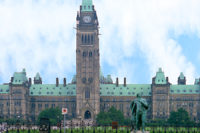Recall Prevention and Planning

A food safety plan starts with prevention, but must also include the actions to take should an incident occur.
Food and beverage processors work hard to produce safe products by using HACCP, quality assurance, certified suppliers and more. But in reality, no one can eliminate all chances of a problem occurring. Consequently, all processors must face this reality and prepare for recalls.
FDA defines a recall as the removal or correction of products (including labeling and/or promotional materials) that it considers to be in violation of the laws it administers. While FDA’s definition of a recall does not include market withdrawal or a stock recovery, processors’ food safety plans must address these issues as well.
A market withdrawal is the removal or correction of a distributed product that involves either no violation or a minor violation for which FDA would not initiate legal action. It includes the removal of products as the result of actual or alleged tampering where there is no evidence of manufacturing or distribution problems.
Stock recovery is a firm’s removal or correction of product that has not been marketed or that has not left the direct control of the firm and been released for sale or use.
Preparedness pays
According to Dan Hinkebein, manager of recall business services at Recall Results, developing a recall plan is a team effort involving a wide variety of functional areas, such as the operations, quality assurance, legal, accounting and marketing departments. In addition, Hinkebein stresses the plan must be a living document that is reviewed on a periodic basis and updated to reflect changes in products, distribution patterns and suppliers. Therefore, it should also include a document for sign off by key department managers and top management.
In addition, the recall plan should set standards for which records are to be maintained, how the information will be collected and stored, how it will be retrieved and within what time frame, and how long it will be retained. At a minimum, these records must include supplier lot numbers and shipments. However, a more effective set of records tracks lots through each step of the supply chain, including production. An even more complete record includes quality and logistics data (carrier ID, delivery time, etc.).
|
Other potential costs of a recall
Source: RQA Consulting;
www.rqa-group.com. |
Communications is another key element of any recall plan. As a rule of thumb, authorities must always be provided with as many details as possible. These include a robust accounting describing what happened, a risk assessment and details on what action is being taken (if any) and why. Manufacturing or retail customers also must be involved at an early stage. And, since many of a recall’s negative impacts come from the market, a public relations effort should be part of any recall plan. (Information on communications to the trade and the public can be found in the FDA Compliance Manual at www.fda.gov/food.)
Having a written recall plan and updating it quarterly or semiannually are essential. But how can a processor ensure the plan’s effectiveness? Hinkebein suggests a full mock recall at least once per year, with an outside resource validating its results. The mock recall should be complete, exercising all the functions outlined in the plan including simulated customer notifications, PR activities, lab tests and more.
What about insurance?
Most companies have general liability insurance that typically covers legal actions as a result of a recall, but this does not cover the cost of the recall itself. Recall insurance is available from a number of companies, but the coverage is often misunderstood. A product recall does not have to result for the insurance to be triggered. For example, a contamination in a plant, distribution center or in transit will trigger the policy. Often, insurance companies also offer risk management and incident support in the form of expert consultants who can help with prevention as well as offer emergency response services. These “added policy benefits” help minimize risk for both the insured company and the insurer.
Recall insurance is made up of two elements: malicious product tampering and accidental product contamination. Typical costs covered by the insurance include:
- The cost of activities to clean or repair the location, including the increased cost of copacking
- Loss of gross profit as a result of an incident
- Recall costs including newspaper advertising, transportation, additional warehouse space, overtime, inspection and analysis costs, and the cost of replacing the contaminated goods
- Rehabilitation expenses to re-establish the product to the reasonably projected level of sales or market share
- Consultant costs.
Processors work hard to avoid recalls, but they need to assume the worst and plan for it. Recalls can threaten the very existence of a business and, at a minimum, cost a lot of money. The better you plan in advance, the more effectively and efficiently you will be able to react to a recall.
View chart listing various costs associated with a recall.
Looking for a reprint of this article?
From high-res PDFs to custom plaques, order your copy today!








